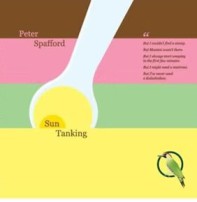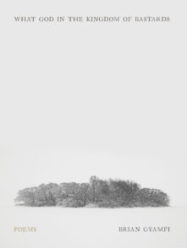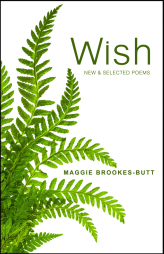
Jean Atkin, The Bicycles of Ice and Salt,
Indigo Dreams Publishing, 2021.
ISBN 978-1-912876-64-8. 36pp. £6.50.
Jean Atkin’s reputation as a writer and poet goes before her. She has established herself as a distinguished figure on the literary landscape with competition successes, being widely published and securing residencies such as Troubadour of the Hills for Ledbury Poetry Festival and BBC Poet for Shropshire in 2019. Her latest pamphlet, The Bicycles of Ice and Salt, will further reinforce her standing as a poet of quality.
The collection contains poems exclusively, as stated on the back cover, “about two long and long ago bicycle journeys in Europe.” When the journeys occurred is not specified, but seven years separate the first and the second. However, specific places are mentioned and evoked in the text. The countries travelled through are easily identified as France, Spain and Portugal. The pamphlet therefore might be claimed to sit within the genre of travel and topographical writing but what we have here first and foremost is a collection of very fine poems
Atkin realises that it is not enough to simply recount what occurred while travelling but that the writing itself has to be worthy of interest and transcend its source material. On the other hand, Atkin does not merely poeticise her experiences in a superficial way but captures and elevates her travels in poems that are worthy of the name.
While it might have been tempting to produce a sequence, the collection is in fact a series of interlinked poems that resonate as separate pieces. There is an implied narrative but The Bicycles of Ice and Salt is not a linear “road movie”. Rather it is a montage of illuminated key moments. However, to add structure Atkin employs unifying leitmotifs and themes.
The pamphlet opens with the title poem. The title in itself is arresting and inventive, drawing the reader in. The focus is on the bicycles, which like the cars in the Italian Job, are the stars of the show. They almost seem to become living entities: “They sing like birds, says a lyrical/bike mechanic in Troyes.” This is further reinforced in another poem, ‘bicycle’, when rider and bicycle become fused: “I have perhaps exchanged/some molecules with it on the road/so its taut steel has sprung/my wrists”.
The interplay between what is alive and what is inert is one of the recurring themes alluded to earlier. Inanimate objects become invested with life and movement. Bicycles, fabrications of inert materials, are endowed with momentum through the agency of the cyclist while art objects, most notably two statues, are rendered human in two vivid poems, ‘Jeremiah dances’ and ‘Eve in Autun’. The former is a response to the statue of Jeremiah in the church of Saint-Pierre, Moissac. Atkin captures its kinaesthetic vibrancy with a poem that positively dances in its lyricism. Similarly, ‘Eve in Autun’, is seen in a metamorphic light: “Her naked body’s sinuous as trees. This/is about the flesh, and not the bone.”
Some poems are pared back to the notation of journal entries but written with the crispness one can find in the journals of Gilbert White, such as these lines on eating a purloined pear:
Their skins are bronze,
a little rough,
flesh sweet.
This is observation but of a highly distilled calibre. Atkin does not allow circumstantial detail to overwhelm the integrity of each poem. Atkin achieves this throughout the collection with subtly effective tonal qualities and vivid imagery that do not strain the limits of natural speech and risk becoming stilted. No matter how intense the imagery, the register does not stray too far from the everyday:
We ride through white bees of hoarfrost
that blur our eyelashes. Ice narrows us.
We count the centimes.
Aural effects too are delicately handled, as in the following lines:
Glassy waves crash in the dark. We hear them
break. There is no more ice, only a swell
of salt to melt the heart.
The stanza is woven together with assonant internal rhymes that are subtly mimetic and adroitly handled.
Atkin rarely writes in fixed forms, therefore the only poem in The Bicycles of Ice and Salt, the aforementioned ‘Eve in Autun’, which employs a regular rhyme scheme, stands out all the more. The rhymes are subtly employed, but lead ineluctably to a transgressive shock in the last two lines:
Her breasts hang round as fruits. I watch her reach back,
without looking, for the apple and her whoredom.
The closing word is explosive, ironically encapsulating centuries of misogyny and patriarchal ambivalence towards women. This perspective links with the threat of male violence elsewhere in the collection, as in ‘Penknives’ where the travellers in a closed down campsite/by the village edge/rigid// listening to footsteps and voices/more than one man/circling the tent.” Such potential danger is offset by acts of unsolicited kindness as when a young man appears singing “beneath his breath in words I didn’t understand. By our tent/ he halted, and put a jar of honey in my hands.”
Bicycles is an impressive collection, demonstrating that Atkin is a poet whose work is true, in the dual sense of both authentic and beautifully wrought.
David Mark Williams
To order this book click here
David Mark Williams writes poetry and short fiction. He has two collections of poetry published: The Odd Sock Exchange (Cinnamon, 2015) and Papaya Fantasia (Hedgehog, 2018). For more information go to www.davidmarkwilliams.co.uk
Dennis Hinrichsen, Flesh-plastique,
Green Linden Press, 2023.
ISBN: 978-01-9992263-8-4. 98pp. $18.00.
There’s plenty that’s apocalyptic and plain alarming in Flesh-plastique, but there’s also a sweet nostalgia, a sort of comfort and humor amidst the bleakness that Dennis Hinrichsen portrays, and stylistically, Flesh-plastique is a work of genius. The first poem in the collection, “[THIS IS THE NUCLEAR AGE],” sets the table.
municipal solid waste –
agricultural and coal mine
waste – waste oils
and sludges – wood paste – contaminated solids –
hazardous
lethally
poisonous materials – that’s what you could ignite for wattage in middle
America then – so much
industrial slag
Time and again Hinrichsen invokes Chernobyl, Fukushima, the Sellafield nuclear site in England, plutonium, fission and fusion. Disaster staring us in the face. “the world is abattoir,” he begins the poem, “[mosaic] [divina commedia] [WITH A BOXER IN IT].” “I feel I am besieged by end times // a toxic forever-chemical kind of feeling,” he writes in “[I THOUGHT MY MARAUDING DAYS WERE OVER],” and later in the poem he laments, “O dying human race.” The poem, “[schema di radiazone] [WITH JLO AND THE BIKINI ATOLL]”:
a cycle of fission and fusion // sometimes lusting // sometimes
just a man in standard-issue shorts and t-shirt shoveling
plutonium-laced debris into a plastic bag
and later in the poem: “I can feel the cancers rooting now”
The poem, “[FISSION],” whose very erasures, text blotted from the page, emphasize the cancellation that threatens the planet, includes the lines:
Just the whipsaw ratcheting of time, everything happening all at once, Burnt
River, Piney Point, Fukushima – bear witness: this is the half-life –
wastewater – millions of gallons of it – pumped / to be pumped into bay and ocean.
At the root of it all is pure human greed. “we cannibalize
the planet (first body) to keep us in toys and Netflix,” he writes in [ZOETROPE WITH REPURPOSED STEEL IN IT AND A HOLLYWOOD STAR].” “toil,” from the becquerels section, which is
presented as white print on a black page, like a computer screen or an e-reader, indicts the exploitation of textile workers in Bangladesh. All the guns – night
ambient [I] – all the vehicles choking the atmosphere – night ambient [II]” (“I hear you dying ethereal demonic howl ruinous song of oxides”) – spring from pure human
rapaciousness.
But there is also a kind of ironic black humor at work here as well. You see it in some of the titles – “[mosaic] [LATE-STAGE CAPITALISM] [WITH CAP’N CRUNCH]”
and
“[DESPAIR IN OPEN D] [WITH GERARD MANLEY HOPKINS ON TOM-TOMS]”
Hinrichsen’s sly humor is also evident in the juxtaposition of some of the epigraphs to his poems – almost all of them come with epigraphs or other clues, such as song titles. Take “[MY PORONOGRAPHIC REGIME] [TAKE #17] [WITH ELVIS PRESLEY AND THE WILD BOARS OF FUKUSHIMA]” – An epigraph of a technical quotation from one D.M. Taylor in a periodical called Applied Radiation and Isotopes is paired with: “I’m a hunk, a hunk of burning love – Elvis Presley.” Or take “[MY COYOTE DEATH] [WITH A FULL MOON IN IT] [AND A HAUNTING],” which comes with three introductory quotations, one from an article about animal mutations, another from the 1941 movie, The Wolf Man, and one from Warren Zevon’s “Werewolves of London” (“I saw a werewolf with a Chinese menu in his hand”). “[schema di radiazone] [WITH JLO AND THE BIKINI ATOLL]” comes with an epigraph from a Washington Post article about nuclear waste followed by a lyric from Gang of Four’s “I Found That Essence Rare” – “So the girl on the TV dressed in a Bikini / She doesn’t think so but she’s dressed for the H-Bomb”
Indeed, music is an important element in these poems and a source of joy, a kind of redemption. Some of the memory poems in the debris field [I] section are especially affecting, including “[SELF-PORTRAIT AT 45 RPMs],” [WAITING FOR THE END OF THE WORLD WITH HERB ALPERT AND THE TIJUANA BRASS],” and especially “[Not Fade Away] OR [SELF-PORTRAIT IN VANTABLACK WITH ANISH KAPOOR]”:
I’m singing because I’m happy Buddy Holly’s Not Fade Away //
there is – I think – still time for this // he’s alive because I am
alive // chorus cutting now across the top of a column of
wind // this is how the dead infect // how decay calls out to us //
The poem ends with:
I am skin-to-skin a membrane // heart – BOP BOP bop BOP – alive // Amen
Other memory poems are just as poignant, particularly the three “[ELEGY FOR MY UNCLE]…” poems and the title poem, which is the memory of a former lover that ends:
“O Death-erotic / you so full of life sometimes // the kiss of her still deep in the skull”
“[mosaic] [LATE-STAGE CAPITALISM] [WITH CAP’N CRUNCH]” is a memory of his father, from a photograph of him “mid-air above a backyard pool fully dressed” as his colleagues toss him in after a successful sales year. “[cycle] [re] [cycle]” contains the repeated line, “my mother comes back as a bar of soap.”
Quite plainly, Hinrichsen’s style of poetry-on-the-page is almost like a painter with a canvas. The punctuation – the bracketed titles, the Dickinsonian dashes, the parenthetical asides – brings attention to the association of ideas. “[be] [held]” includes the self-deprecating lines
(my life so boring I have to put it in parentheses
to get it right— going out for milk—playing hide-and-seek with the cat
who is dead now these last four years—I don’t even purr anymore
at what I know is not her shadow but an orphan sock—the real motif
indicating deadening time—the Dali corrosive –
body can tell you that—body with its failing gridwork—body just another
burning shell—I can’t stand this anymore—this being alone—
invisible—untouched—so—cut!—next scene…)
Flesh-plastique is an important book for bringing attention to our fragile planet and species and to the value of our own fragile being-alive. It is also an impressive artistic achievement.
Charles Rammelkamp
To order this book click here
Charles Rammelkamp is Prose Editor for BrickHouse Books in Baltimore, where he lives, and edits The Potomac, an online literary journal. http://thepotomacjournal.com. His photographs, poetry and fiction have appeared in many literary journals. His latest book is a collection of poems called Mata Hari: Eye of the Day (Apprentice House, Loyola University), and another poetry collection, American Zeitgeist, is forthcoming from Apprentice House.





